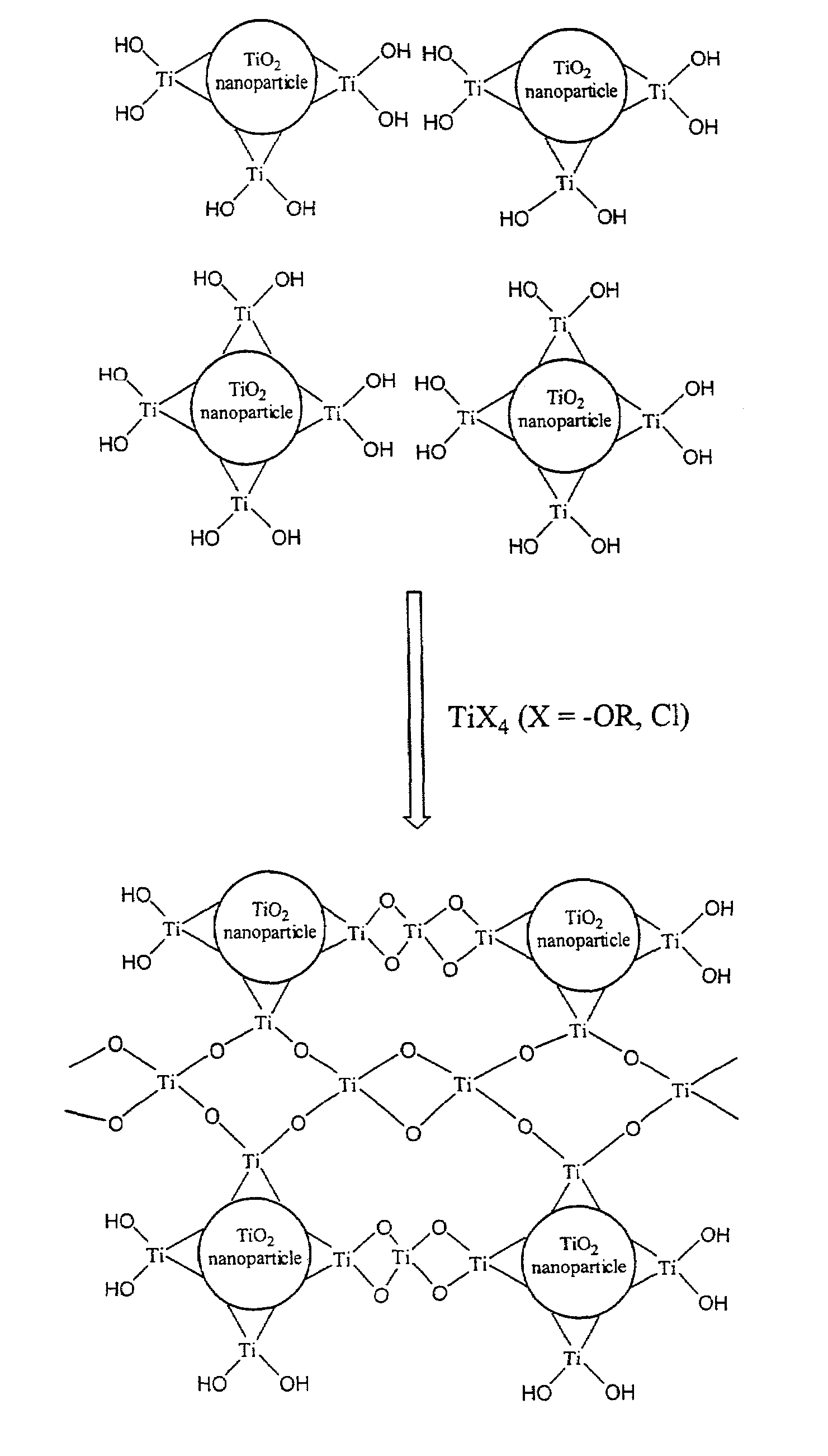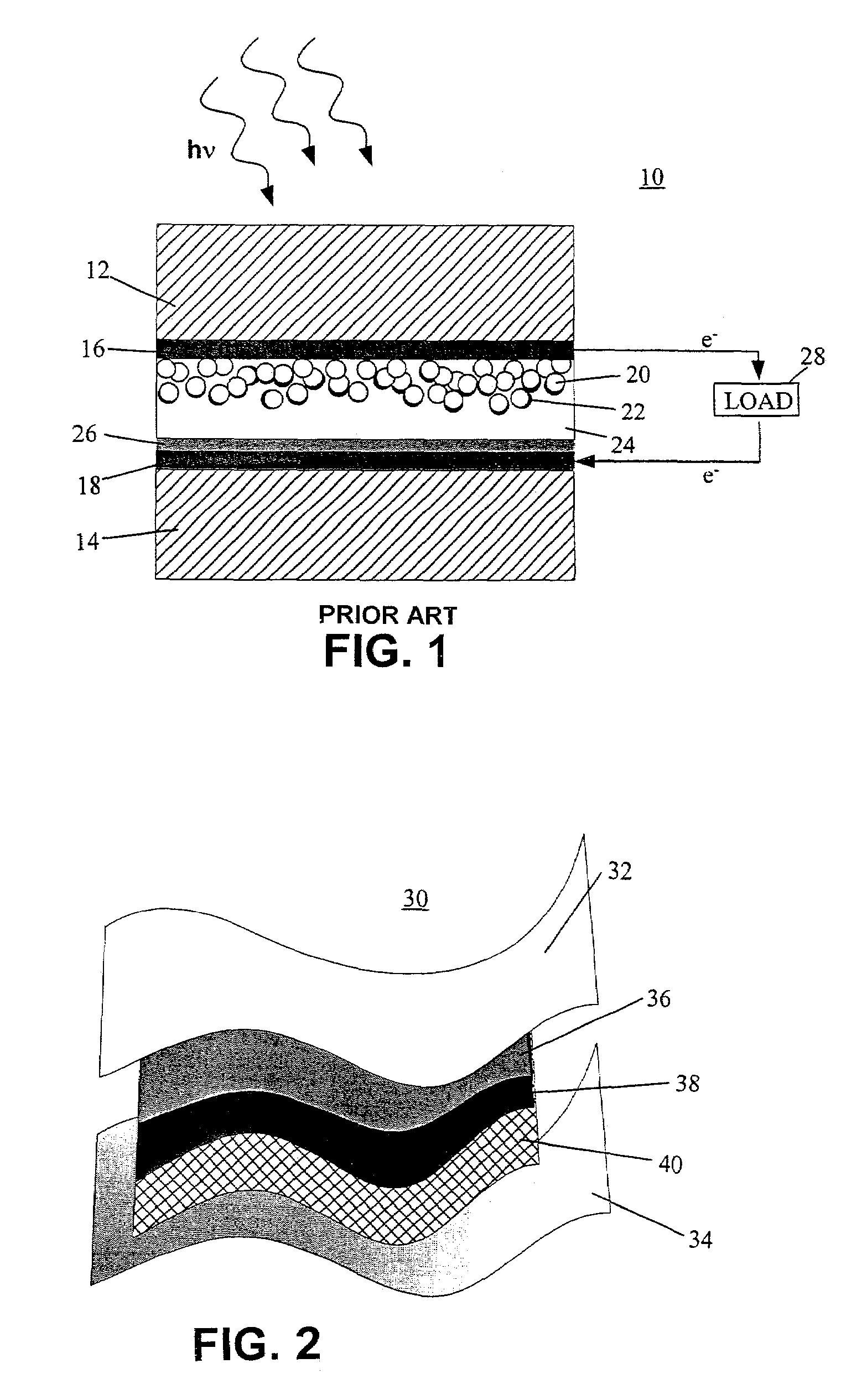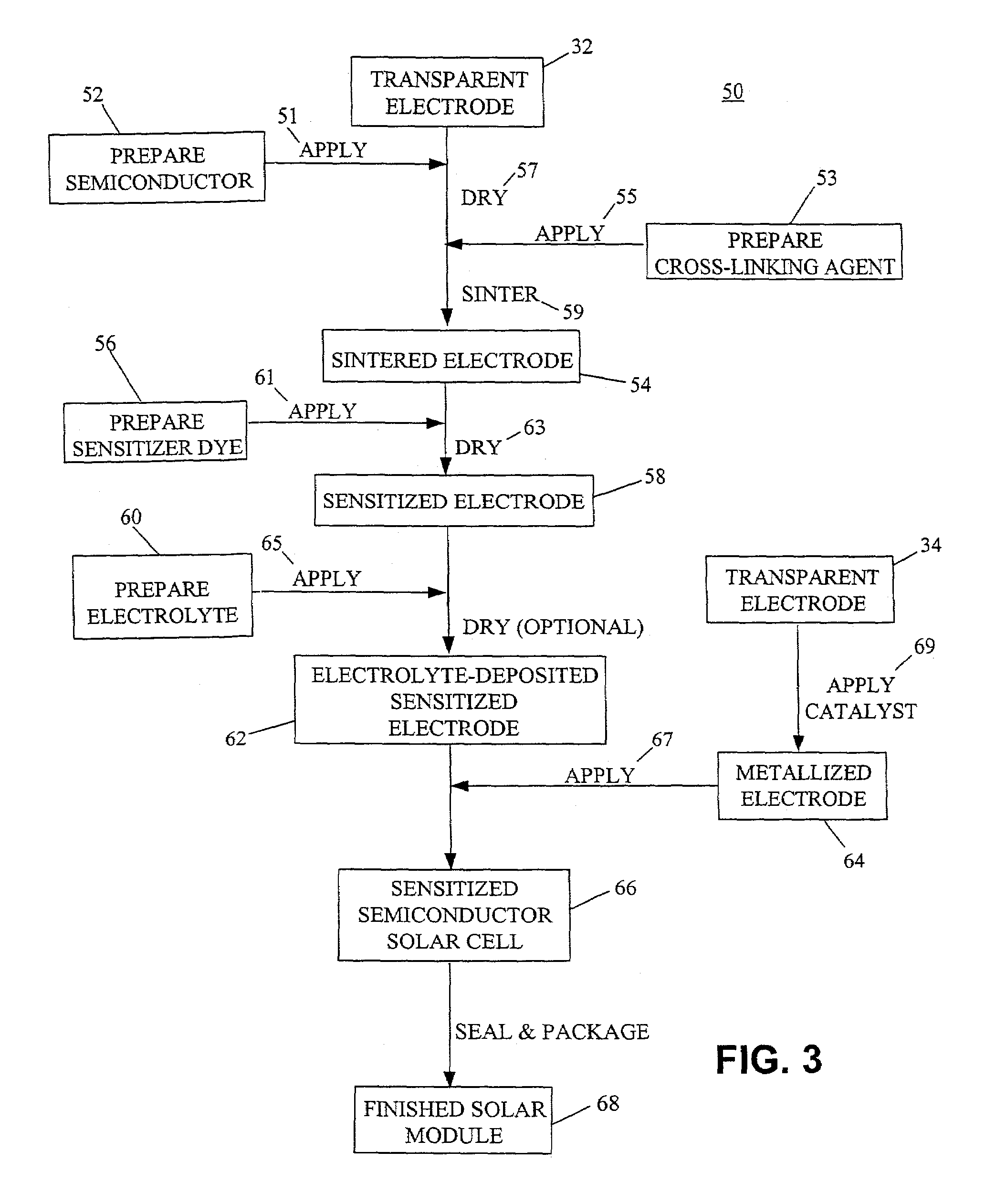Photovoltaic cell
a photovoltaic cell and cell technology, applied in the field of photovoltaic cells, can solve the problems of limited use of certain components of photovoltaic cells, limited selection of manufacturing processes, and limited use of useable materials, so as to increase the selection of materials, improve the quality of photovoltaic cells, and reduce the effect of temperature stability
- Summary
- Abstract
- Description
- Claims
- Application Information
AI Technical Summary
Benefits of technology
Problems solved by technology
Method used
Image
Examples
example 1
[0064]A dye-sensitized solar cell having flexible substrates was made according to the following procedures.
[0065]A PET substrate (200 microns thick, 10 mm×10 mm) was coated with a 200 nm thick ITO coating by thermal evaporation. A colloidal TiO2 solution was prepared by dispersing P25 particles in water (pH 3-4). The TiO2 was deposited on the PET substrate by spin coating. After deposition, the electrode was heated at about 50° C. for about 10 minutes.
[0066]The TiO2-coated PET substrate was then soaked in a 20% titanium tetrabutoxide solution in ethanol (wt / wt) for 15 minutes. After soaking, the substrate was removed from the solution, dried at about 50° C. for about 30 minutes, and dried at about 120° C. for about 30 minutes.
[0067]The sintered substrate was dye-sensitized by soaking the substrate in a solution of cis-di(thiocyanato)bis(2,2′-bipyridyl-4,4′-dicarboxylate) ruthenium (II) in ethanol (1 mg / mL) overnight.
[0068]A redox polyelectrolyte (a liquid electrolyte including 1 M ...
example 2
[0070]A dye-sensitized solar cell having rigid substrates was made according to the following procedures.
[0071]An ITO-coated glass slide (surface resistance 8 ΩQ / cm2) was coated with TiO2 nanoporous film by spin coating from a TiO2 dispersion (7 micron thick). The coated slide was dried at room temperature for 30 minutes and sintered at 450° C. in an oven for 1 hour.
[0072]The sintered slide was dye-sensitized by soaking the slide in a solution of cis-di(thiocyanato)bis(2,2′-bipyridyl-4,4′-dicarboxylate) ruthenium (II) in ethanol (1 mg / mL) overnight.
[0073]A redox polyelectrolyte (10% polyethylene oxide, 90% 1:1 ethyl carbonate:propylene carbonate, 0.05 M iodine and 0.5 M LiI in acetonitrile) was coated on the substrate, and sandwiched with a second glass slide coated with an ITO conductive layer (200 nm) and a platinum catalyst layer (2.5 nm thick).
[0074]The cell exhibited a solar conversion efficiency of about 7.3%. The polyelectrolyte was stable up to at least 180 days with no obse...
PUM
| Property | Measurement | Unit |
|---|---|---|
| diameter | aaaaa | aaaaa |
| temperatures | aaaaa | aaaaa |
| thickness | aaaaa | aaaaa |
Abstract
Description
Claims
Application Information
 Login to View More
Login to View More - R&D
- Intellectual Property
- Life Sciences
- Materials
- Tech Scout
- Unparalleled Data Quality
- Higher Quality Content
- 60% Fewer Hallucinations
Browse by: Latest US Patents, China's latest patents, Technical Efficacy Thesaurus, Application Domain, Technology Topic, Popular Technical Reports.
© 2025 PatSnap. All rights reserved.Legal|Privacy policy|Modern Slavery Act Transparency Statement|Sitemap|About US| Contact US: help@patsnap.com



